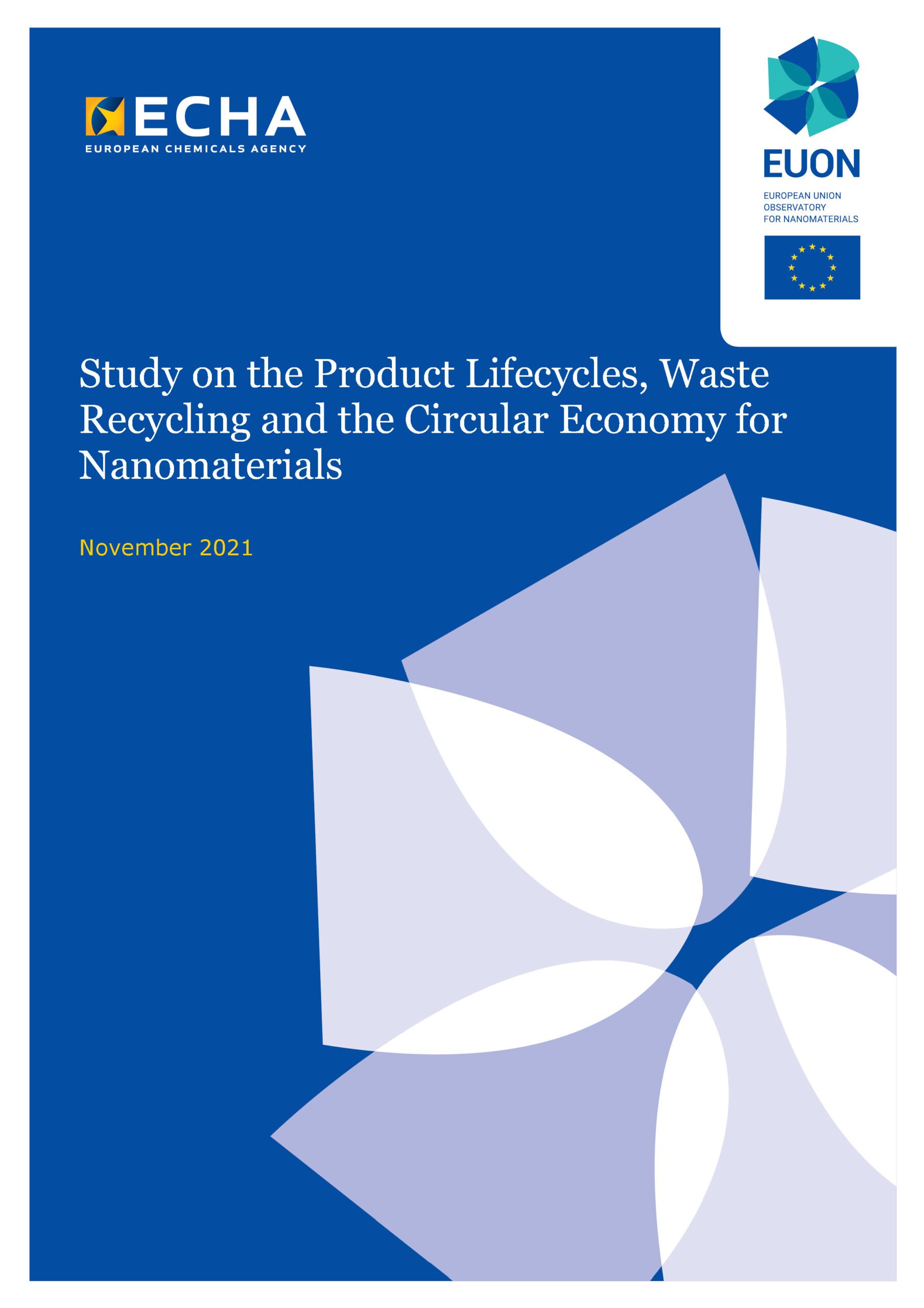
EU report calling for research on recycling and environmental impacts of nano-materials is relevant for PIN FRs. The 130-page report from ECHA (European Chemicals Agency) and EUON (European Union Observatory for Nanomaterials) states that nano-fillers have “potential to contribute to increasing recycling rates of waste and the quality of the recycled products” but on the other hand it is indicated “the environmental and human health impact of nanoparticles has not yet been fully investigated; reports about the recyclability of nano-enhanced secondary products and materials are absent”. The report notes a lack of data concerning the “toxicity of incineration residues from the combustion of waste containing nanomaterials”, but refers to three studies based on in-vitro cell tests (summarised below). The report’s recommendations include: developing public datasets of presence of nano-materials in products; field research on exposure to nano-materials in waste management and recycling; improving scientific evidence on the relationship between in vitro data and real risk associated with exposure.
- Chivas-Joly 2019: tested cytotoxicity of soot (particulate matter in gas) and residual ash from incineration of EVA containing 5 wt% aluminium PIN nano-fillers (alumina, boehmite). The residual ash was not cytotoxic, whereas soots from nano-filled EVAs were cytotoxic, and the cytotoxicity of boehmite-EVA soot was higher than that of pristine boehmite.
- Vejerano 2015: tested oxidative potential, cytotoxicity and genotoxicity of particles resulting from incineration of pure nano-materials and of paper and plastics containing them at 0.1 – 10 wt% (inc. silver, nickel, titanium cerium, carbon C60, iron and other metals). Most of the nanomaterials ended up in bottom ash: mostly < 1% in particulate matter (soot), except for C60 (one quarter in soot). Silver, titanium and C60 nano-particles showed oxidative potential in soot, whereas iron, nickel and cerium did not. None of the nanofillers significantly modified cytotoxicity or genotoxicity of the soot.
- Stueckle 2019: one nano-clay (bentonite) and three surface-modified clays (smectite clays with organic coatings) were tested for toxic effects on lung cells, pristine and ash after combustion at 550 – 900 °C. Results show that the combustion modifies the cell toxicity of the nano-clays.
Other studies not cited in the ECHA – EUON report address the release of nano-materials, not used as flame retardants, from polymer composites. Kotsilkov 2018 tested graphene and carbon nanotubes @ 3 wt% in PLA films, showing that these are largely eliminated in incineration at 850°C but may be found in ash in combustion at lower temperatures. Greiner 2021 (see pinfa Newsletter n°123) showed that phosphorus PIN flame retardants can reduce emissions of respirable carbon fibre particles from composites in fires (see also Laura Greiner in pinfa Newsletter n°105).
“Study on the Product Lifecycles, Waste Recycling and the Circular Economy for Nanomaterials”, RPA for European Union Observatory for Nanomaterials (EUON), Reference: ECHA-22-R-11-EN, ISBN: 978-92-9468-014-3, November 2021 https://euon.echa.europa.eu/documents/2435000/3268576/nano_lifecycles_euon_en.pdf/
“Physical, morphological and chemical modification of Al-based nanofillers in by-products of incinerated nanocomposites and related biological outcome”, C. Chivas-Joly et al. J. Hazardous Materials, Elsevier, 2019, 365, pp.405-412 https://doi.org/10.1016/j.jhazmat.2018.10.029
“Toxicity of particulate matter from incineration of nanowaste”, E. Vejerano et al., Environ. Sci. Nano, 2015, 2, 143–154 https://doi.org/10.1039/C4EN00182F
“Impacts of Organomodified Nanoclays and Their Incinerated Byproducts on Bronchial Cell Monolayer Integrity”, T. Stueckle et al., Chem Res Toxicol. 2019 December 16; 32(12): 2445–2458 https://doi.org/10.1021/acs.chemrestox.9b00277
“Prevention of the formation of respirable fibers in carbon fiber reinforced epoxy resins during combustion by phosphorus or silicon containing flame retardants”, L. Greiner et al., Polymer Degradation and Stability 185 (2021) 109497 https://doi.org/10.1016/j.polymdegradstab.2021.109497